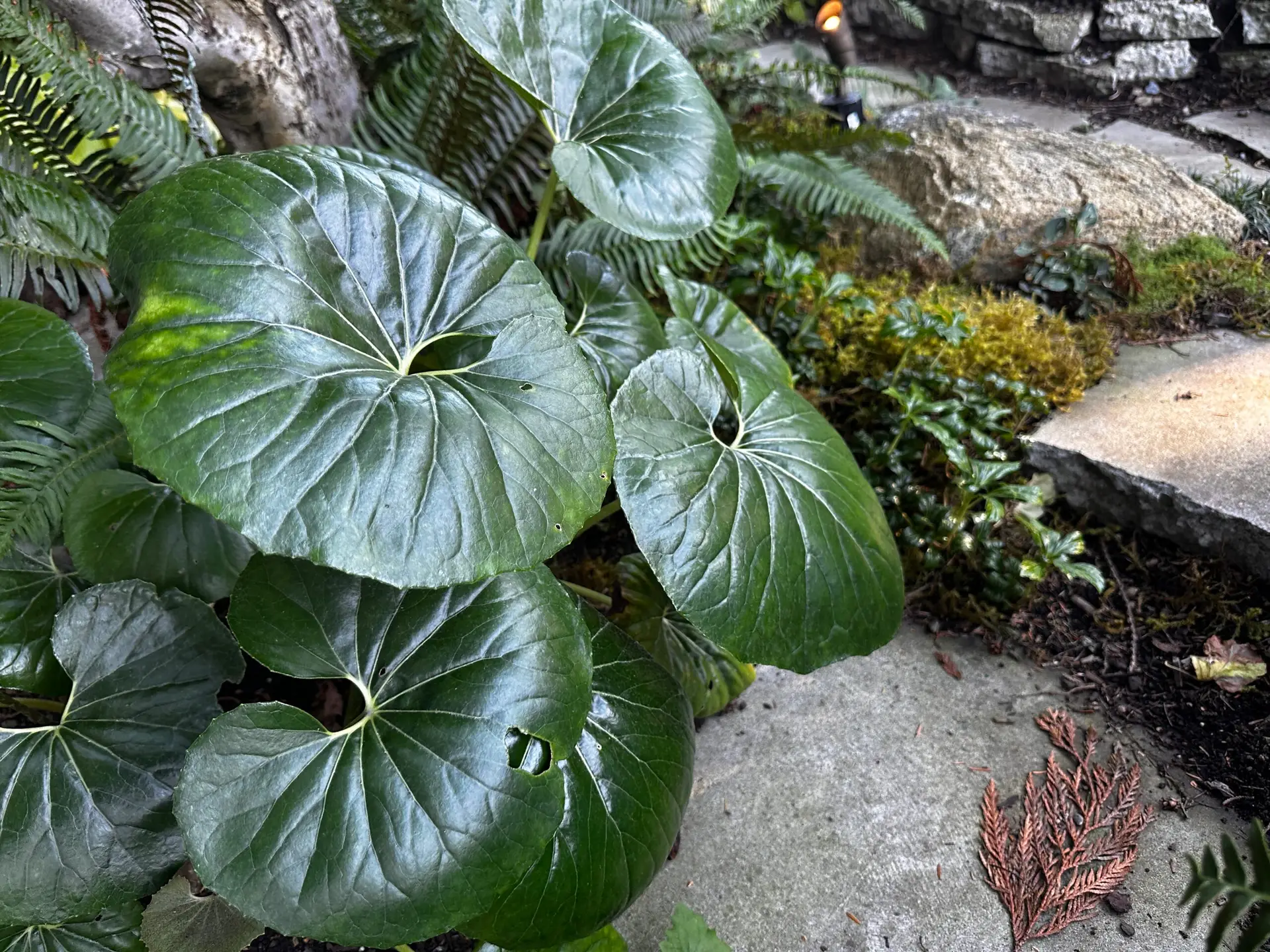Farfugium japonicum ‘Giganteum’
Old Name: Ligularia tussilaginea

Large, glossy, rounded leaves up to 18″ across give this perennial a bold, architectural presence. The foliage is deep green, often lightly puckered or dimpled, and creates a lush, almost tropical effect in shade. In autumn, tall stalks carry clusters of bright yellow, daisy-like flowers, a cheerful contrast against the dark leaves.
Native to Japan’s coastal regions where it thrives in damp, shaded ravines. The nickname “tractor seat plant” comes from its oversized, round leaves resembling old tractor seats.
Though commonly grown in soil, Farfugium is highly tolerant of damp conditions and can be planted at pond edges or even tucked into rock pockets near moving water.
Thrives on moist pond edges and bog shelves. Can be grown with roots in saturated soil or shallow water, making it a reliable marginal plant for shady water features.
Pairs beautifully with ferns and hostas for layered shade plantings. The oversized leaves contrast well with fine-textured grasses or moss.
Japanese maples, ferns, astilbes, mosses, moisture-loving grasses.
Flowers attract late-season pollinators. Broad leaves create habitat and shelter for amphibians.
Sun: Partial shade; tolerates full shade
Moisture: Prefers consistently moist soil; tolerates boggy edges
Soil: Rich, organic, well-draining
Cut back flower stalks after bloom to keep foliage clean. Protect from slugs/snails. In colder regions, mulch heavily to protect crowns.
I use it to anchor shady corners of water gardens. It softens edges and adds instant scale. It looks especially striking backed with driftwood or stone.